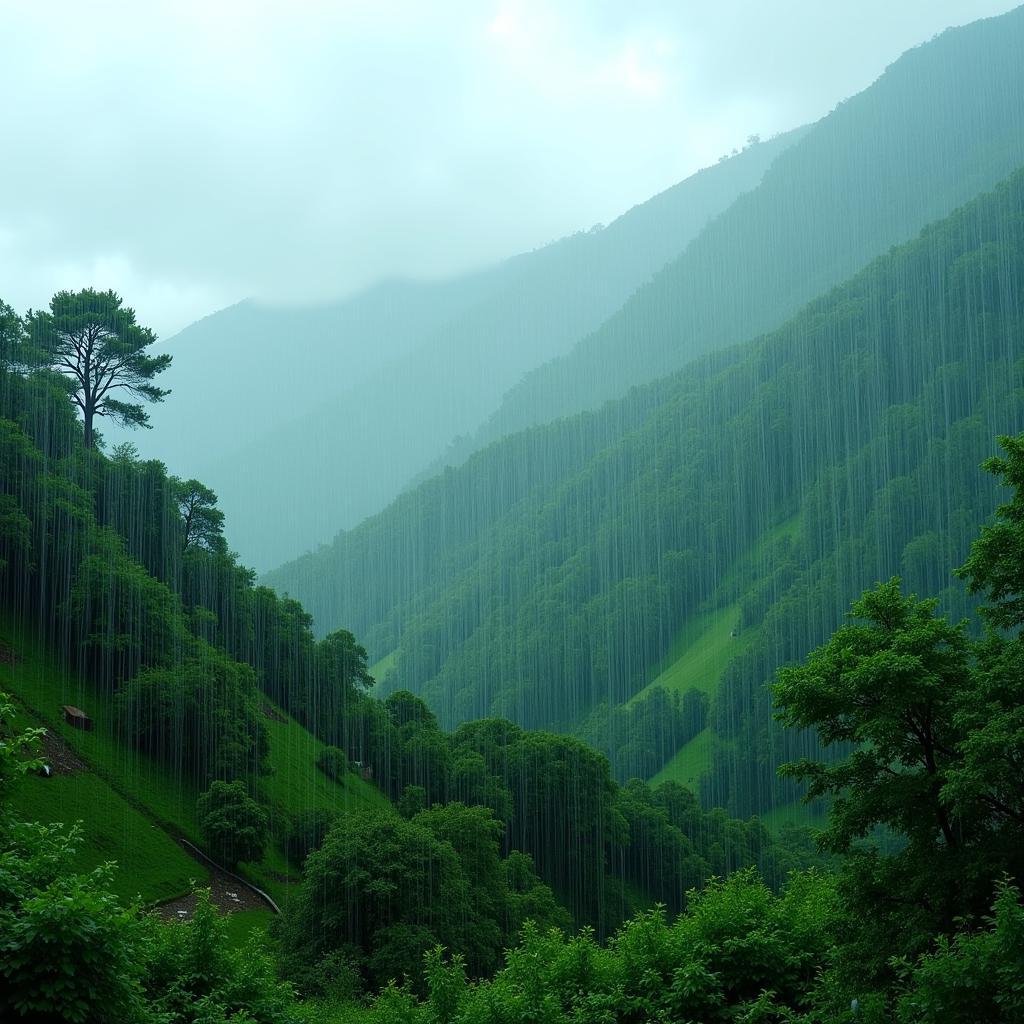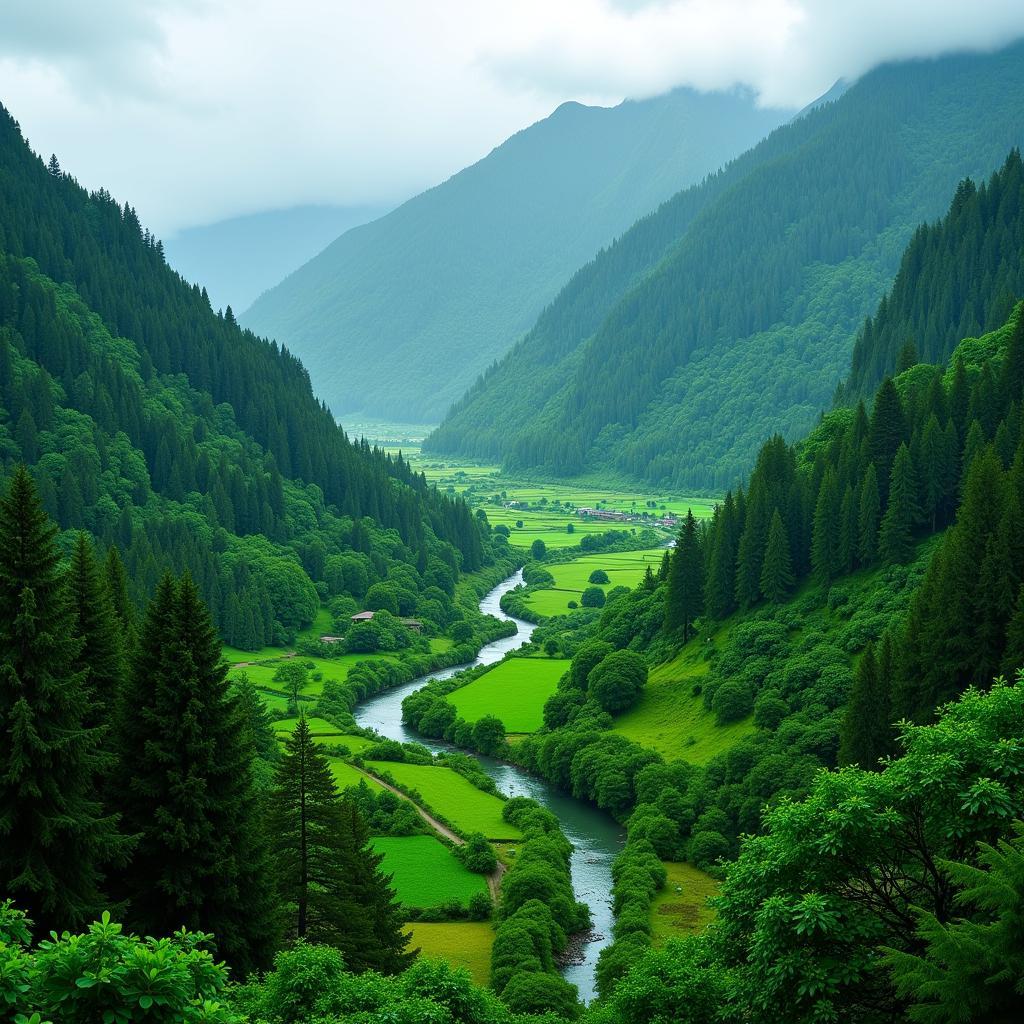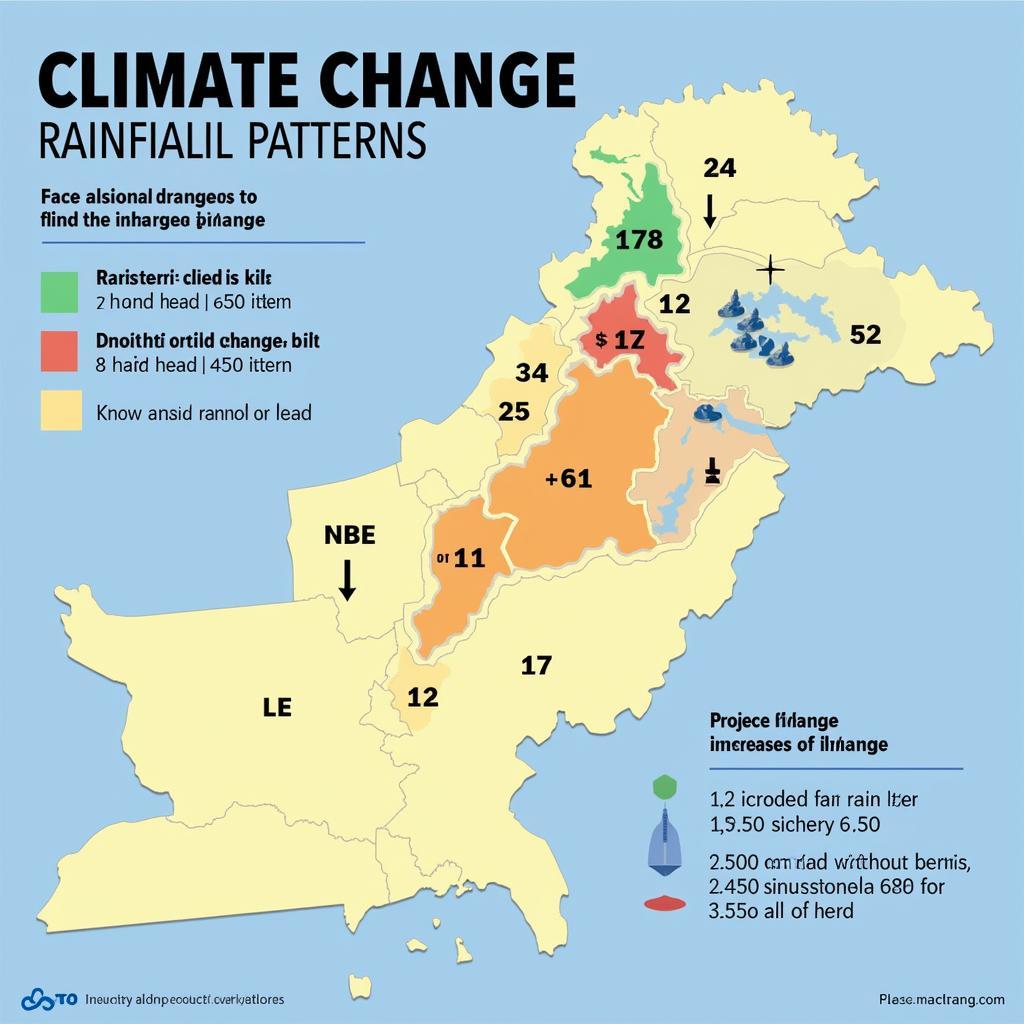Pakistan, a land of diverse landscapes, experiences a wide range of weather patterns. From the arid deserts of Balochistan to the lush green valleys of the north, rainfall varies dramatically. But where exactly is the Rainiest Place In Pakistan?
Unveiling Pakistan’s Rainfall Hotspot
Determining the absolute “rainiest place” requires careful consideration. While several areas contend for this title, Murree, located in the foothills of the Himalayas, often emerges as a top contender. This picturesque hill station receives exceptionally high rainfall, especially during the monsoon season. Other areas like the Swat Valley and parts of Azad Kashmir also experience significant rainfall, contributing to the region’s vibrant ecosystems.
Why Murree? A Deep Dive into its Rainy Reputation
Murree’s geographical location plays a crucial role in its high rainfall. Its elevation and proximity to the Himalayas make it a prime target for monsoon clouds. These clouds, laden with moisture from the Bay of Bengal, release their bounty over Murree, resulting in torrential downpours. This heavy rainfall contributes to the region’s lush vegetation and scenic beauty, attracting tourists from across Pakistan and beyond.
 Murree Pakistan Heavy Rainfall
Murree Pakistan Heavy Rainfall
The Impact of Heavy Rainfall: A Blessing and a Curse
While the abundant rainfall sustains Murree’s vibrant ecosystem, it also poses significant challenges. Landslides, flash floods, and road closures are common occurrences during the monsoon season, disrupting daily life and impacting tourism. Proper infrastructure and disaster preparedness are essential to mitigate these risks and ensure the safety of residents and visitors.
Beyond Murree: Exploring Other High-Rainfall Areas
Besides Murree, several other regions in Pakistan experience substantial rainfall. The Swat Valley, known for its scenic beauty and rich cultural heritage, receives significant precipitation, supporting its agricultural activities. Similarly, parts of Azad Kashmir, with their mountainous terrain and dense forests, also witness heavy rainfall, contributing to the region’s biodiversity.
 Swat Valley Pakistan Monsoon Rain
Swat Valley Pakistan Monsoon Rain
Measuring Rainfall: Understanding the Metrics
Measuring rainfall involves using various instruments and methods. Rain gauges, strategically placed across different locations, collect rainfall data, which is then analyzed to determine the average rainfall in a particular area. These measurements are crucial for understanding weather patterns, predicting floods, and managing water resources effectively.
The Future of Rainfall in Pakistan: Climate Change Considerations
Climate change is significantly impacting rainfall patterns globally, and Pakistan is no exception. While some areas may experience increased rainfall, others might face more frequent droughts. Understanding these changing patterns is crucial for adapting to the challenges of climate change and ensuring sustainable water management practices.
 Pakistan Rainfall Climate Change Impact
Pakistan Rainfall Climate Change Impact
In conclusion, while Murree is often cited as the rainiest place in Pakistan, other regions also experience significant rainfall, contributing to the country’s diverse climate and ecosystems. Understanding these rainfall patterns and the impact of climate change is crucial for sustainable development and resource management.
FAQ:
- What is the average annual rainfall in Murree?
- Which months experience the highest rainfall in Pakistan?
- How does rainfall impact agriculture in the Swat Valley?
- What are the risks associated with heavy rainfall in mountainous regions?
- How is climate change affecting rainfall patterns in Pakistan?
- What measures are being taken to mitigate the impact of floods in Pakistan?
- What are the main sources of water for Pakistan besides rainfall?
Need further assistance? Please contact us: Phone: +923337849799, Email: news.pakit@gmail.com or visit our office at Dera Ghazi Khan Rd, Rakhni, Barkhan, Balochistan, Pakistan. Our customer service team is available 24/7.
For more information on related topics, please explore other articles on our website.